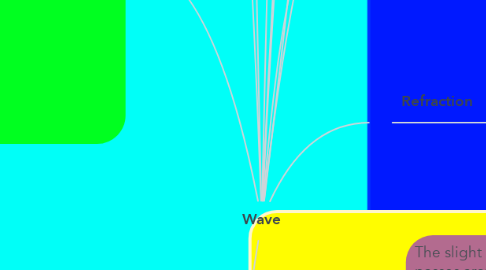Wave
by Fayyadh Abqari

1. Fayyadh Abqari Bin Zarawi 2K2
2. Reflection
2.1. The Normal is the imaginary line drawn perpendicular to the boundary.
2.2. Change in direction of a wave when it strikes a boundary.
2.3. The incoming wave is called the Incident Wave. (Forms with the normal)
2.4. The angle formed between the incident wave and the normal is called the Incident Angle
2.5. The Reflected wave also forms an angle called the Reflected Angle
3. Types of wave
3.1. Transverse wave
3.1.1. Displacement of the medium is perpendicular to the direction of propagation of the wave.
3.1.2. Transporting energy from east to west
3.1.3. Example
3.1.3.1. Ripples on the surface of water
3.1.3.2. Vibrations in a guitar string
3.2. Longitudinal wave
3.2.1. Displacement of the medium is parallel to the direction of propagation of the wave.
3.2.2. Example
3.2.2.1. sound waves
3.2.2.2. ultrasound waves
3.2.3. Has compressions and rarefactions
4. Wavelength
4.1. Distance from one crest to another, or from one trough to another
5. Amplitude
5.1. Maximum amount of displacement of a particle on the medium from its rest position
6. Speed
6.1. distance a wave travels in a given amount of time
6.2. Speed = Wavelength x Frequency.
7. wavefront
7.1. surface over which an optical wave has a constant phase.
8. Period
8.1. time it takes to complete one cycle
9. Frequency
9.1. The number of waves passing any point per second
9.2. The hertz measurement, abbreviated Hz, is the number of waves that pass by per second.
10. Refraction
10.1. change in direction of a wave when it passes from one medium to another.
10.2. The index of refraction of a medium indicates how the speed of a wave will be affected while it is traveling in that medium.
10.3. when the wave goes through refraction, an incident angle and a refracted angle are formed.
11. Diffraction
11.1. The slight bending of light as it passes around the edge of an obstacle.
11.2. When the gap size is equal to wavelength, maximum diffraction occurs


